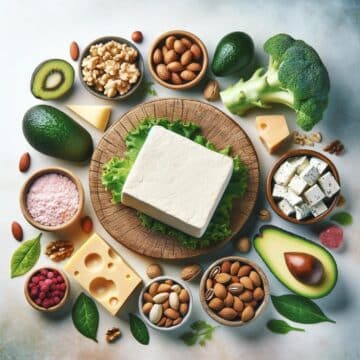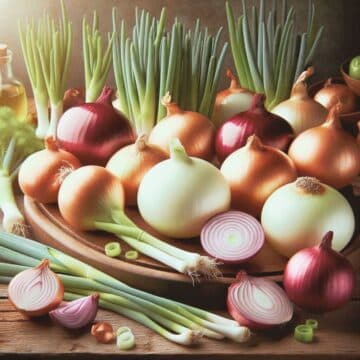Welcome to one of the most confusing things in the world of baking: what is the difference between baking powder, baking soda, and cream of tartar?
A lot of people have come to that point in a recipe where they've got either baking powder or baking soda, but the recipe calls for the one that they do not currently have in their kitchen. When this happens, many consider subbing in one for the other.
They all look similar, and baking soda and baking powder both contain the word baking in their names. So, how different could they be?
When a recipe does not turn out the way a beginner baker expects, it is clear that baking powder, baking soda, and cream of tartar are not the same. Most people are left scratching their heads, still not understanding where they've gone wrong. Therefore, understanding the differences between these three ingredients is the key to being an expert baker.
Where's the catch?
It turns out that all three ingredients are very different, though they look very similar. All three are leaveners, and leaveners are substances that make the dough rise. Nevertheless, the chemical makeup of the three is where they are different, and these different chemical makeups cause them to behave differently.
A word on Baking Soda
Baking soda is also known as sodium bicarbonate, and sodium bicarbonate is a base.
Not to turn this into a chemistry lesson, but it is essential to understand that acids like to react with bases.
Most of us made a volcano from vinegar and baking soda when we were kids. Combining baking soda (base) with vinegar (acid) causes carbon dioxide to be produced as bubbles. Add a little red food color and some clay to make a model volcano, and you will have a great school science fair project that looks like a volcanic eruption.
Well, baking soda works the same when you use it in baking. It reacts with acids to produce carbon dioxide bubbles. This will cause the dough to rise and allow lovely fluffy cakes, muffins, and cookies to be made.
Baking soda is powerful; thus, it needs to be used in just the right amount. If too much is used, then some will be leftover. This causes a soapy metallic taste that can ruin a recipe.
Cream of Tartar
Cream of tartar is an acid, and it is a byproduct of winemaking. Basically, after wine ferments in barrels, there is a residue leftover in the used barrels that is scraped off. When later combined with baking soda, that residue is used as a leavening agent.
Baking Powder
Baking powder is a mixture of baking soda and cream of tartar. The baking soda, which is a base, will react with the cream of tartar (an acid) when it gets wet. As soon as the dry ingredients are mixed in with the wet ingredients, the acid-base reaction will cause leavening.
When the baking powder is exposed to heat, further leavening takes place as the heat speeds up the reaction already happening between the baking soda (base) and the cream of tartar (acid).
Can they be used interchangeably?
Baking soda, cream of tartar, and baking powder are quite different. Though many people face the problem of not having the right one when trying to put together a recipe, great care should be taken when trying to sub in one for the other.
Subbing Baking Soda for Baking Powder
It is important to remember that baking soda has around four times the power of baking powder. So a ¼ teaspoon of baking soda is about the same as one teaspoon of baking powder.
Also, there needs to be enough acidic ingredients to deal with all of the baking soda, and this can be tricky. If you do not account for the acid-base reaction, then you will get that metallic soapy aftertaste that no one likes.
Some acidic ingredients that would neutralize the baking soda could be buttermilk, yogurt, lemon, or vinegar.
For every ½ teaspoon of baking soda, you should use 1 cup of buttermilk or yogurt.
Alternatively, for every ½ teaspoon of baking soda, you should use one teaspoon of lemon juice or vinegar.
Subbing Baking Powder for Baking Soda
You may have the opposite problem. You may have a recipe that calls for baking soda, but all you have is baking powder.
This is an easier problem to solve. Simply take the amount of baking soda the recipe calls for and triple that amount. That's how much baking powder you should use.
Hence, if the recipe calls for one teaspoon of baking soda, you would use three teaspoons of baking powder.
No other modification to the recipe needs to be made since the acid-base reaction is already balanced in the baking powder. The baking powder is made from a combination of baking soda and cream of tartar, so the acid-base should already be balanced.
Make Your Own Baking Powder
In a less common situation (unless you are a serious baker), you've got no baking powder, but you happen to have the cream of tartar and baking soda.
If the recipe calls for baking powder, then you can just make your own. It is a relatively straightforward procedure. Just add the two ingredients together in equal measures. So if you need two teaspoons of baking powder, then add one teaspoon of baking soda and one teaspoon of cream of tartar. This would give you two teaspoons of baking powder.
How and when to use?
Since baking soda reacts to water, care needs to be taken in the mixing process.
The general rule is that whichever leavener you use, it should be mixed thoroughly with the other dry ingredients before being mixed with the wet ingredients. This will make sure an even amount of leavening takes place throughout the whole dough.
How to store leaveners?
To maintain the life of either baking soda, baking powder, and cream of tartar, it is vital to store them properly.
They should all be stored in jars in a cool and dry place, with lids tightly on. Since the baking soda becomes activated when wet, this is especially important to preserve the shelf life of these three ingredients.
When using leaveners, it is important to use dry utensils and to replace lids securely and immediately after each use.
Baking powder usually comes in a small metal tin, that helps keep it dry. Baking soda, on the other hand, typically comes in a cardboard box, that can damage the baking soda if it gets wet. So transferring your baking soda to a metal or glass container may be a good idea.
Where to buy the leaveners?
All of these are extremely easy and cheap to purchase. You can take a trip down to your local grocery store where you should be able to find all of them. They are usually in the baking aisle, but sometimes can be found among the spices as well.
Furthermore, they can be bought online as well. If you are looking to stock up on large amounts, then you can often find them in larger proportions online than at a grocery store.








Roxana says
I pay a quick visit everyday a few websites and websites to read content, except this
weblog offers quality based articles.
Stephanie O. says
Thank you for this post! It explains a lot, I knew they were leavening agents. I had a basic understanding but didn’t know the baking soda was more potent than baking power. It was interesting to know where cream of tartar came from - I had no idea.
Ellie says
Excellent post, really helpful to any beginner (or not so beginner) baker, let alone beginner keto baker like me! Thank you Tisa!